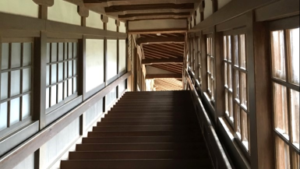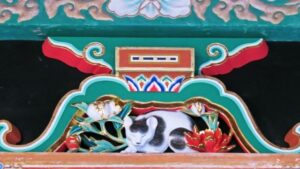Kasugataisha: A 1,300-Year-Old Sacred Shrine in Nara
Kasugataisha Shrine, a UNESCO World Heritage site of Historic Monuments of Ancient Nara, is on the gentle slope of the picturesque Mt.Mikasa. Mt. Mikasa has long been revered as Kannabi, a mountain where deities dwell. The sun rises from this sacred place, clouds emerge from there, bringing blessed rain essential for agriculture. Due to the holy precincts of the Shrine, entry to the mountain has been prohibited to all except priests.

More than 2,200 Rituals, 365 Days A Year

The Kasugasai, one of the three major Chokusai festivals (Aoi, Iwashimizu, and Kasugasai), has been celebrated for over 1,300 years since its establishment in 768 by order of Empress Shoutoku. Even today, an imperial envoy, acting on behalf of the emperor, delivers an invocation for the safety of the nation and the people. In addition, 365 days a year, more than 2,200 ritual festivals are held to pray for the happiness of the people and peace.
Kasugataisha Flourishes with the Rise of the Fujiwara clan
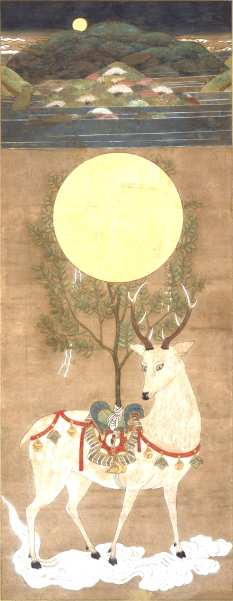
Mt. Mikasayama, a sacred mountain, has been revered since immemorial as “the mountain of the deity.” The 250-hectare virgin forest of Mt. Kasuga has been preserved in its ancient form for more than 1,000 years as the sacred area of the Kasuga Taisha Shrine. It has been revered as the mountain where the sun rises, clouds gather, rain falls, and this rain serves as the life-giving water for all living things.
The origin of Kasugataisha dates back to the Nara period (710-794) when Fujiwara Fuhito transferred the Fujiwara clan deity, Takemikazuchi, from Kashima Shrine in Ibaraki Prefecture to Mt. Mikasa, riding on a white deer. He enshrined the deity and named him the Kasuga Deity. Since then, Kasugataisha has flourished with the rise of the Fujiwara clan. In addition, deer have been regarded as the deity's attendants and are treated with great importance as messengers of the deity.
The Shikinen Zotai Ritual, a 1,200-year-old Tradition
The 60th Shikinen Zotai ritual, a 1,200-year-old tradition of renovating the shrines every 20 years, started on March 1st, 2016, and ended on November 8th, 2017, with several events. The most important event, the Senzasai festival, served as the final ritual welcoming the four main deities; Takemikazuchi (武甕槌命), Futsunushi (経津主命), Amenokoyane (天児屋根命) and Hime-gami (比売神) - returned to the newly renovated main shrines from their temporary shrines.
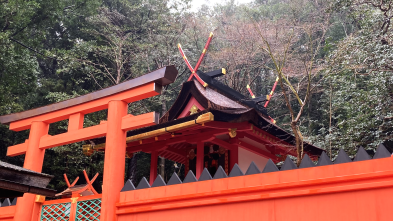
Only four shrines of the main sanctuary and one hall of Wakamiya at Kasugataisha use valuable vermillion called Hon-Shu (100% pure cinnabar, a mercury sulfide mineral). This special material has significant meanings: (1) it represents the energy of life itself, (2) it purifies impurities(kegare), (3) it has antiseptic properties to protect wooden shrines from decay, and (4) it is effective as an herbal medicine for calming, inducing sleep, and disinfectant. Its deep-red color is worthy of Kauga’s deities.
The Sacred Treasures
Many court nobles and generals, including the influential Fujiwara, who had authority at the Imperial Court as relatives of the emperor, visited Kasugataisha and devoted numerous treasures. The collection of treasures is unparalleled in quality and quantity, totaling approximately 3,000 items, with around 360 designated national treasures. Unlike the “treasures of the shrine” dedicated to Kasugataisha, the “sacred treasures” offered directly to the deity are buried in the shrine and not displayed to the public after about 20 years, coinciding with the shrine’s reconstruction for the next ceremonial cycle. Currently, all treasures are meticulously preserved to maintain traditional techniques.

The treasures include a “maki-e harp,” an exquisite Japanese lacquer harp considered one of the finest examples of the dynasty's craftsmanship; a “gold crane and silver tree branch,” depicting a delicate and graceful crane perched on a tree with its wings spread; and a “large armor with red thread veil” decorated with bamboo and tiger designs in exquisite metalwork, reportedly dedicated to the warrior Minamoto Yoshitsune. All these items are said to have been devoted to the deities, each a gem that still conveys a sense of reverence. Furthermore, the “Ruri Lantern,” covered with more than 20,000 beads of lapis lazuli, is said to have been donated by Fujiwara Yorimichi, who ascended to the position of Grand Minister in the Heian period (794-1185). The 3,000 lanterns at Kasugataisha are all lit on the nights of February and August 14 and 15, during the Chugenmantoro ritual, held to pray for the fulfillment of people's wishes.
The Blessings of Nature
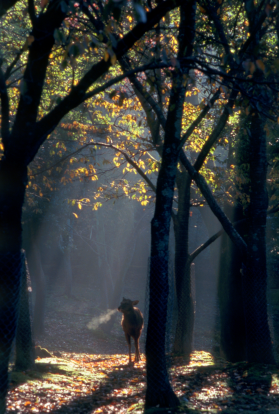
We invite you to visit Kasugataisha to feel the divinity of the mountains and forests, and to meet the deer, the sacred messengers of Kasuga's divinity. This visit will allow you to think that we in modern times are still close to the deities and are kept alive by the blessings of nature.
Recommendations to visit
Kasugataisha Shrine
- Access: 10~15 minutes from JR and Kintetsu Nara Station by bus bound for “Kasuga Taisha Honden.”

